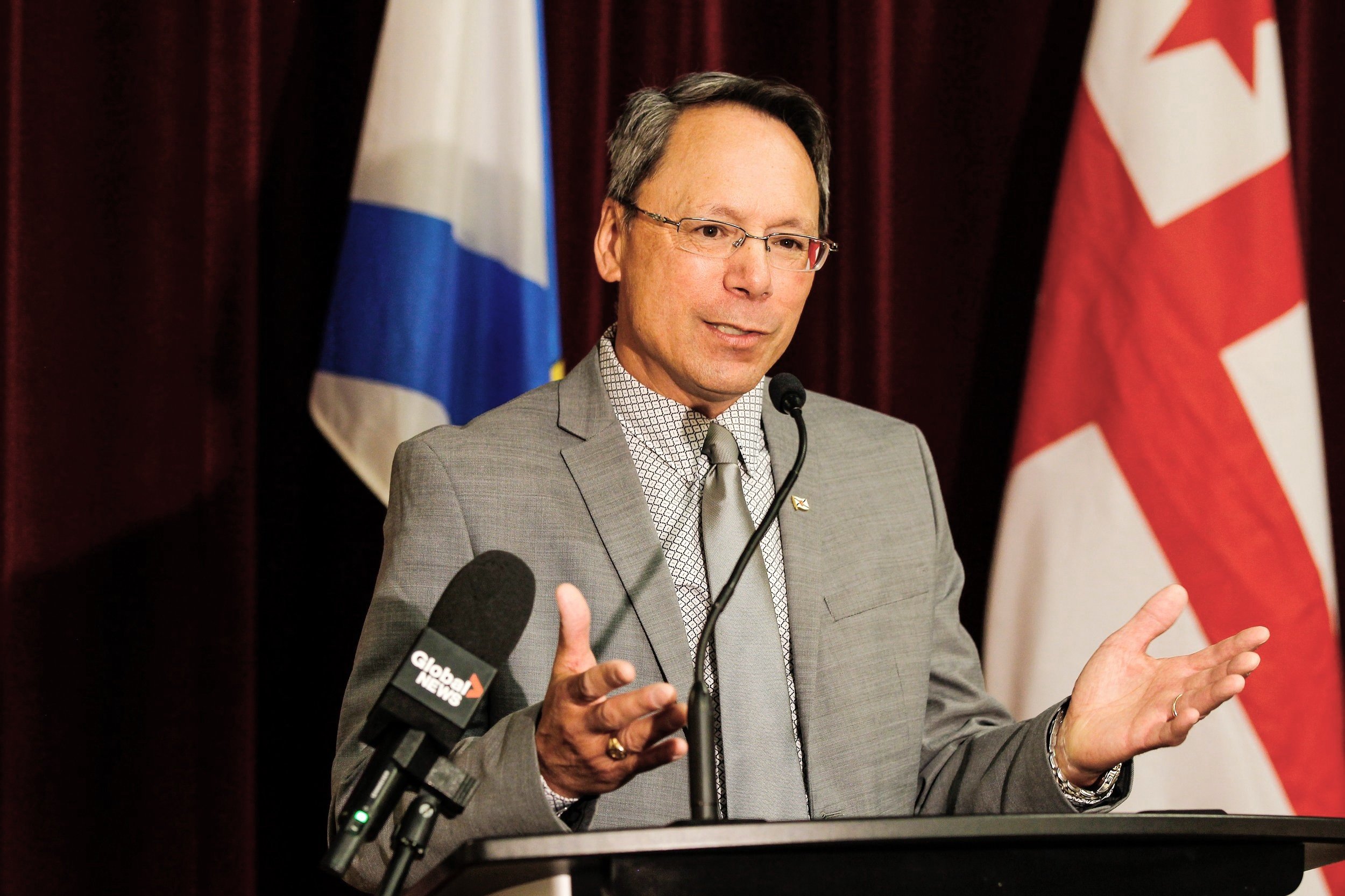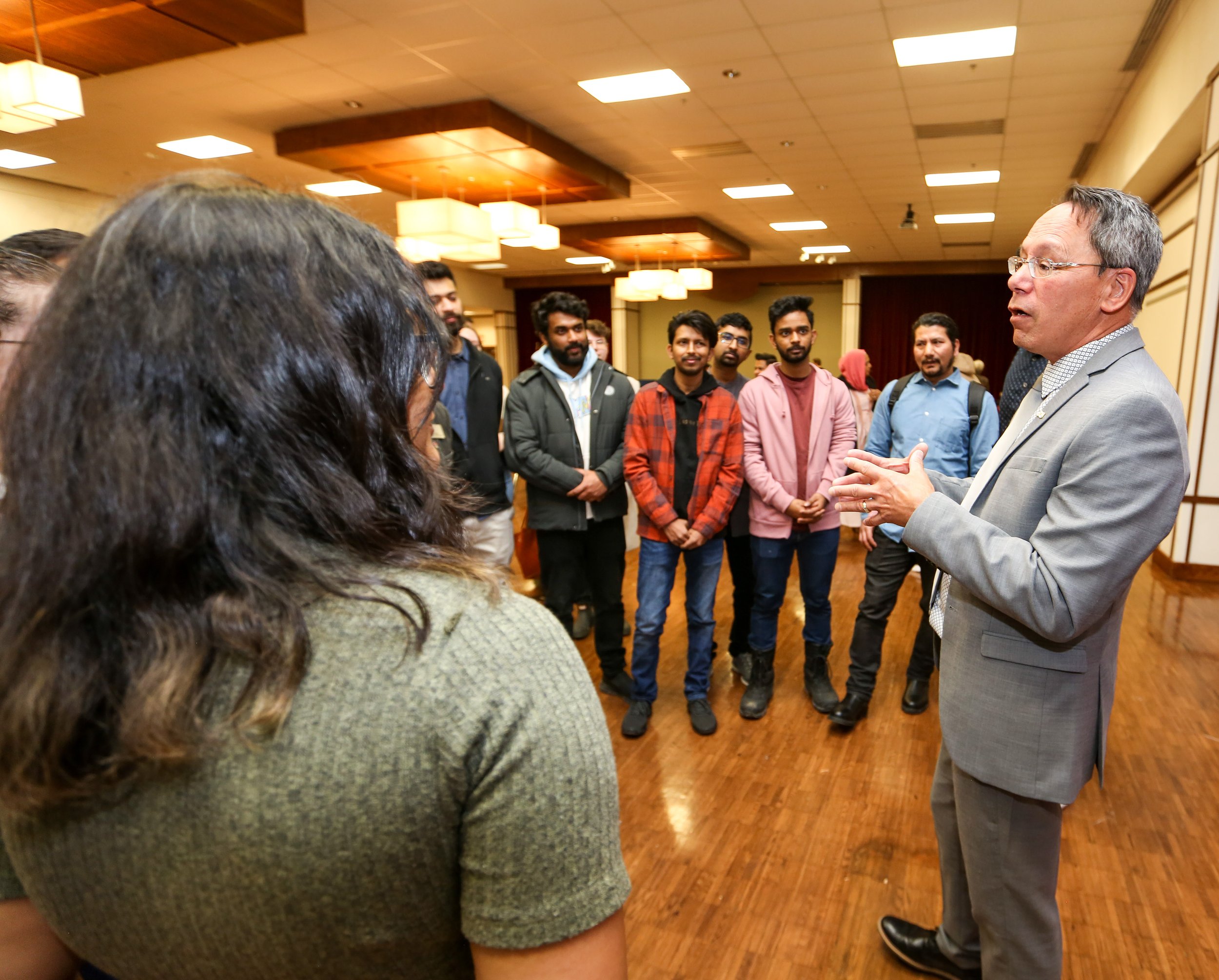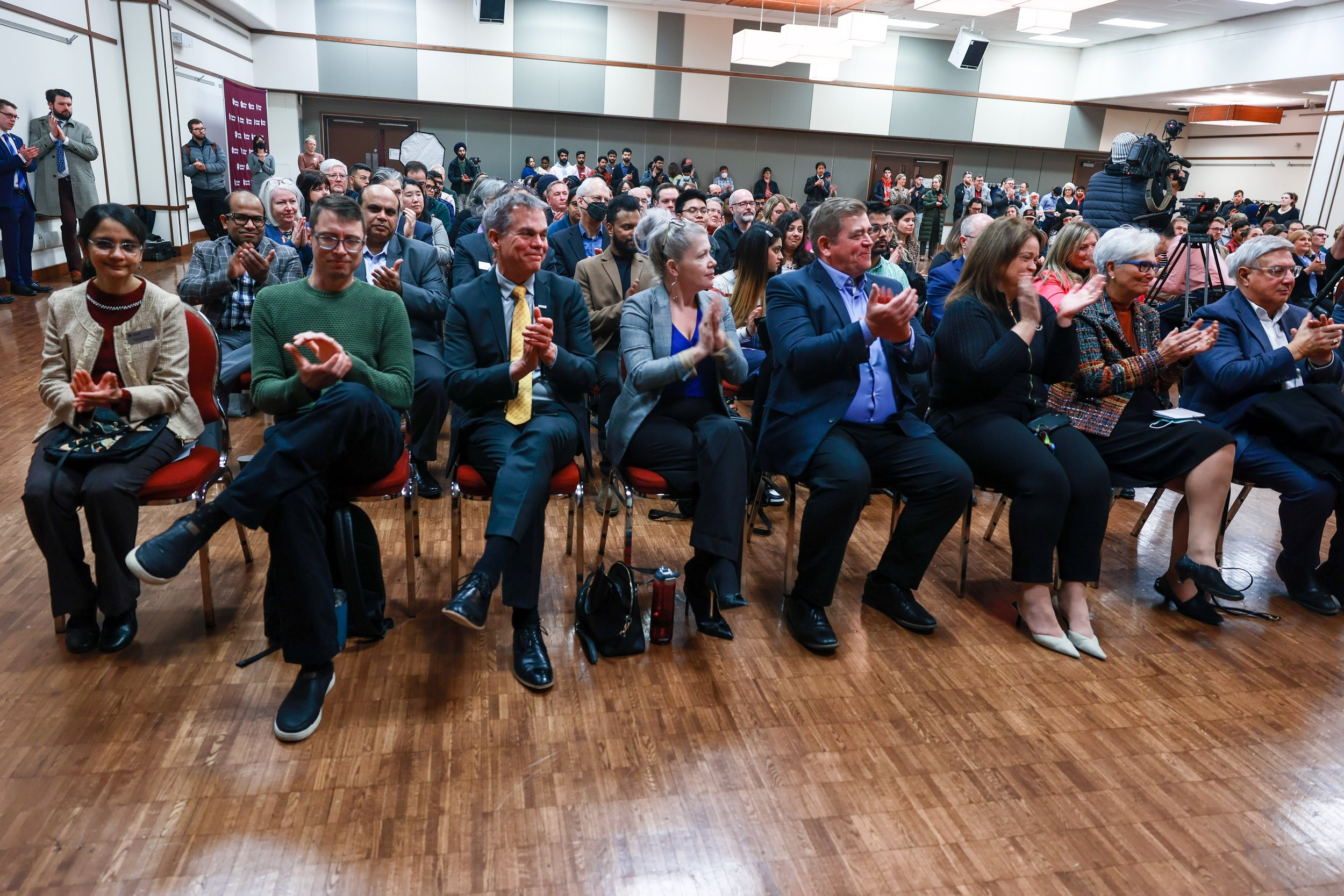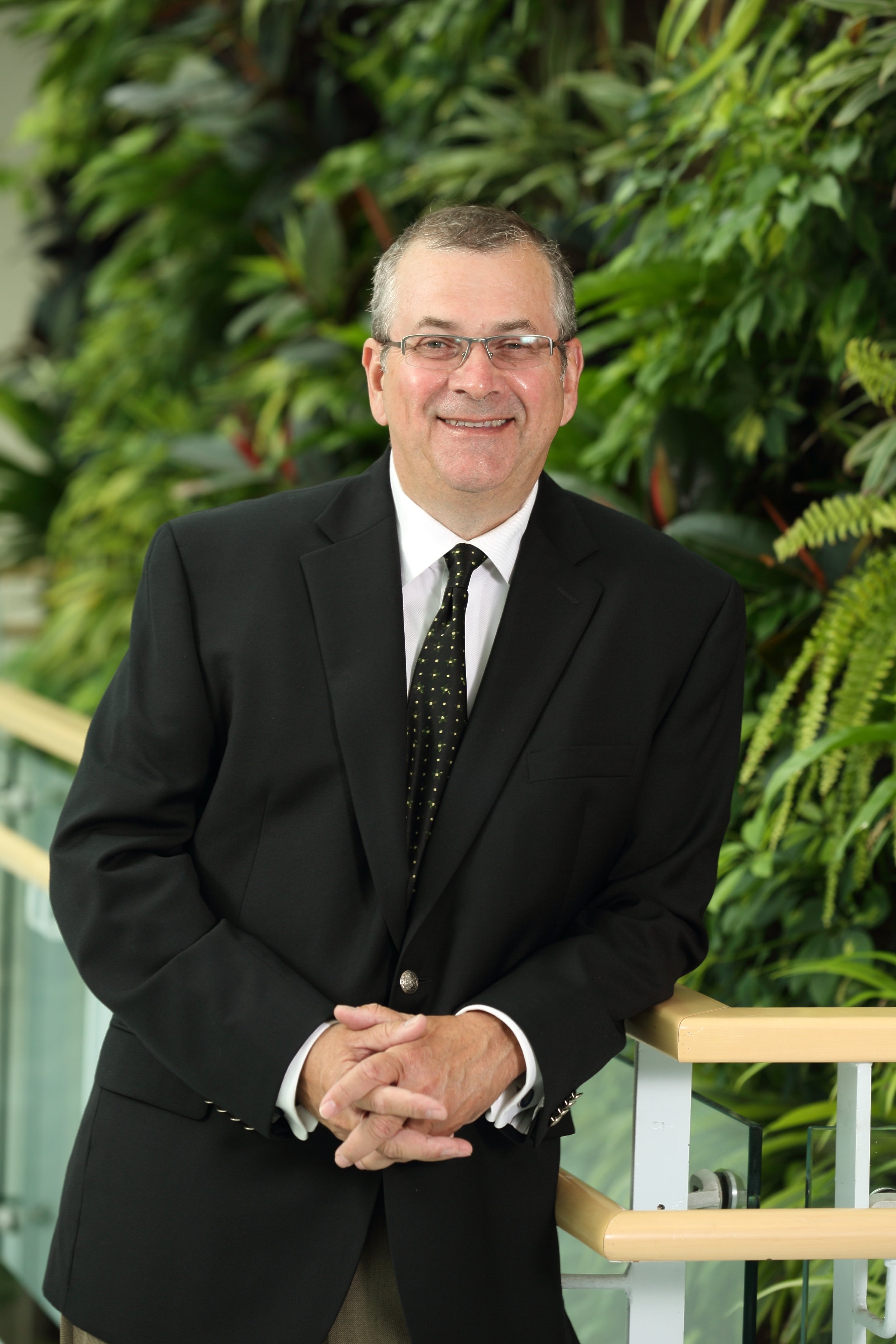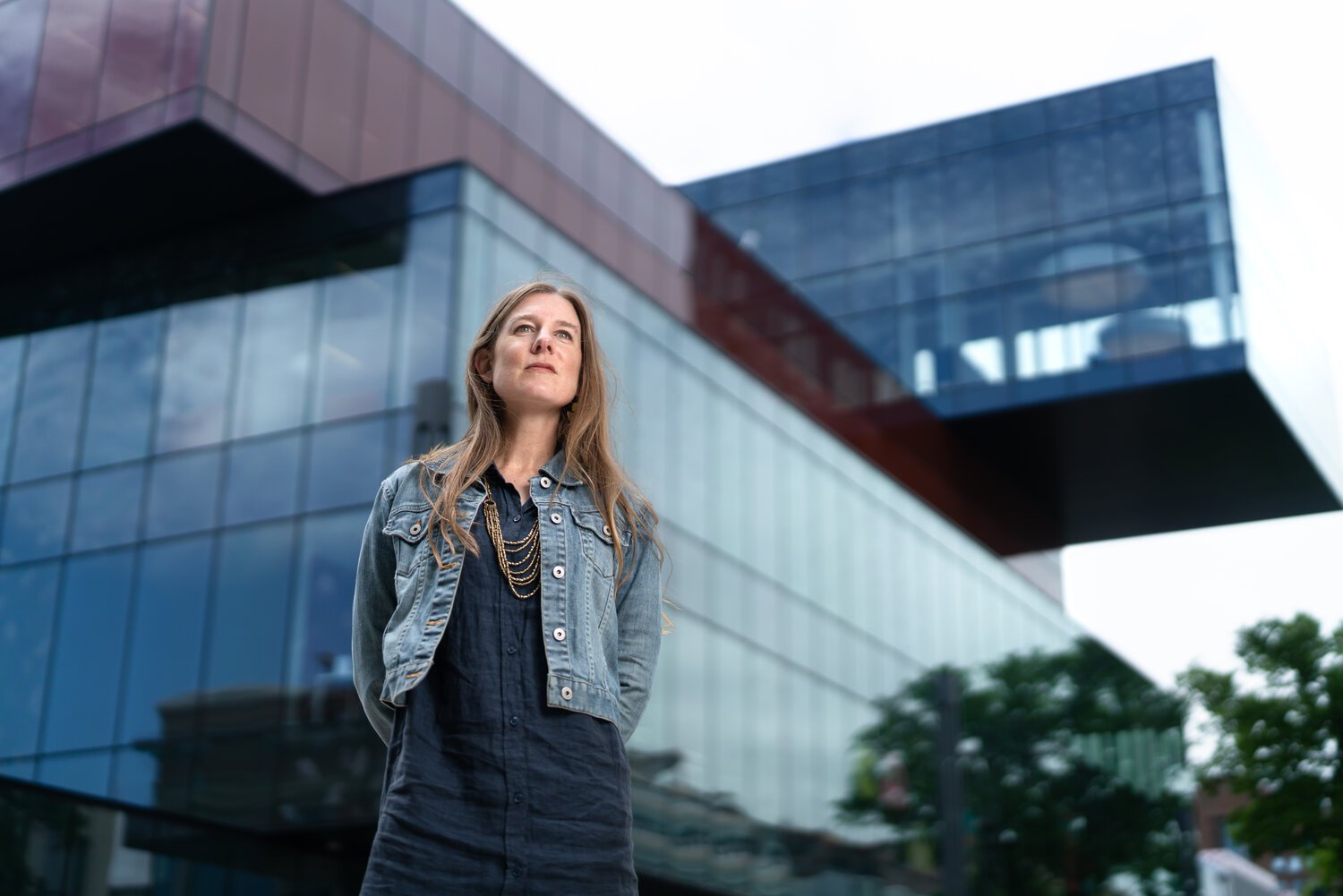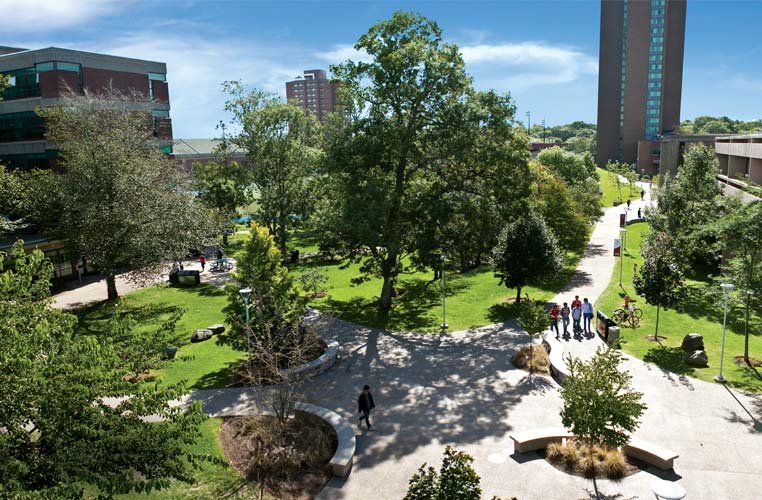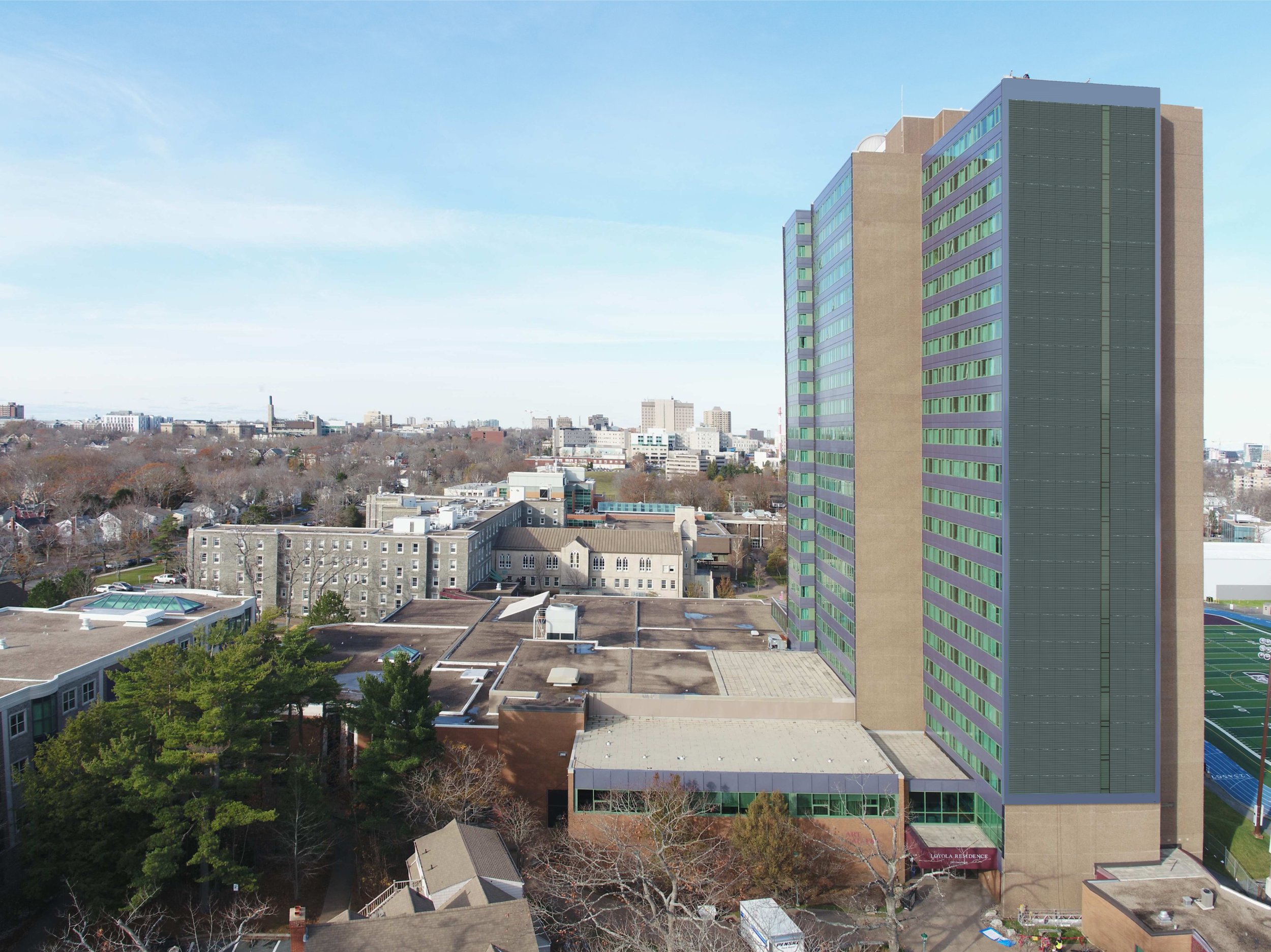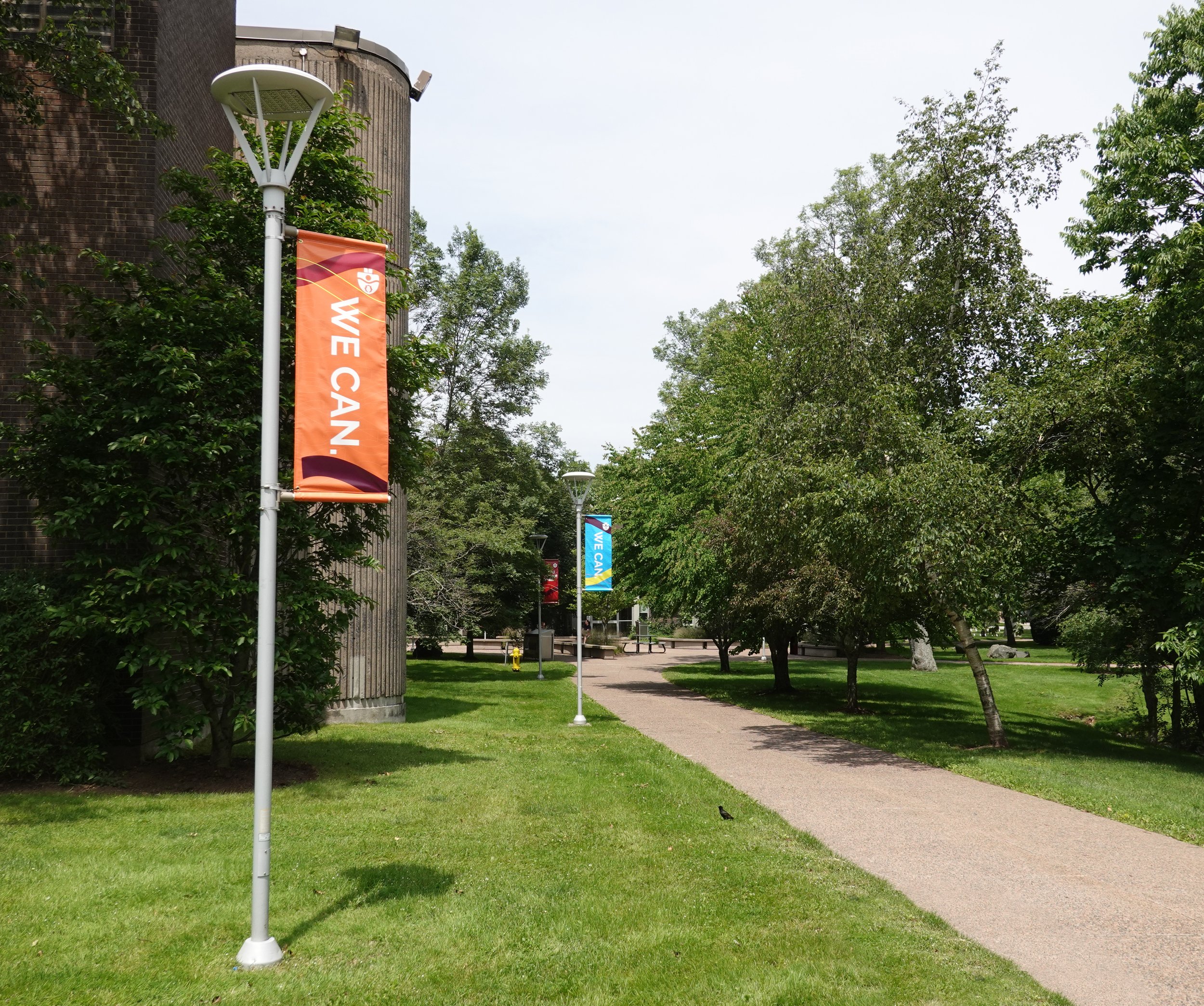Saint Mary’s University will recognize Bob Dawson BA’71 with an honorary doctorate in Civil Law at the 2023 Spring Convocation, celebrating his leadership in fighting racism both on and off the ice. While attending Saint Mary’s University in 1967, Dawson became the first Black athlete to play in the former Atlantic Intercollegiate Hockey League where he was often the target of verbal and physical abuse.
In 1970, he became a member of the first all-Black line in Canadian university hockey, which included Darrell Maxwell and Percy Paris. His commitment to fighting racism did not end when he left university but continues to the present day.
Bob Dawson and teammates recognized as the first all-Black line at SMU Homecoming in 2017
After completing his Masters in Social Work in 1973 at Dalhousie University, Dawson joined the Public Service of Canada in Halifax and later moved to Ottawa in 1980 where he worked for 37-years in human resources management and received several awards for contributions to employment equity and diversity.
“We are very pleased to honour Bob Dawson,” says Saint Mary’s University President Dr. Robert Summerby-Murray. “He has carried his commitment to fight racism beyond the hockey arena and into the wider Canadian society. He shows us what it means to be a leader and live by values that will inspire others, especially future generations.”
As a member of the Ottawa-Carleton Area Police Community Council, Dawson helped develop a community action strategy to prevent, manage and resolve critical incidents involving the police and communities of colour. While with the National Capital Alliance on Race Relations, he established and implemented the “Police-Minority Youth Program”, a community-based initiative to improve relations between the police and youth and was recognized with a Civilian Citation in 1992 and Community Service Award in 1993 from the Police Services Boards for the cities of Gloucester and Ottawa.
Over the years, Dawson has worked with numerous community organizations and universities to organize events and conferences to address racism in hockey. One of his proudest moments came when his request to Canada Post for a stamp to commemorate the “125th anniversary of the Colored Hockey League of the Maritimes (CHLM)” was approved and issued on January 24, 2020. He is currently working with the Canadian Museum of History in Ottawa to create an archival collection on the CHLM. Since February 2021, Dawson has been working with students and staff at the R.I.S.E. Academy on hockey-related initiatives, which included an anti-racism campaign entitled “Blow The Whistle on Racism”.
Dawson played for the SMU Huskies from 1967-1971
An accomplished sportswriter and historian, Dawson writes extensively on Blacks in various sports, especially hockey. On January 25, 2015, he received from Black History Ottawa the John G. Dennison Award for excellence in the study, preservation, and promotion of Canadian Black history and culture. In 2022, The Hockey News recognized him as one of the Social Change Advocates Making An Impact for his work in the areas of anti-racism, diversity, equity and inclusion.
On February 22, 2022, the NHL’s Ottawa Senators presented Dawson with a Senators’ jersey in appreciation for his contributions to growing the game of hockey in Ottawa. At the Carnegie Initiative Summit in January 2023 in Toronto, he was presented with the Carnegie Initiative Lifetime Achievement Award for his commitment to challenging the status quo to make hockey more inclusive.
In recent years, Dawson has returned to his alma mater to reunite with teammates and to host conferences devoted to ending racism and promoting equity and inclusion for Black athletes.
“Bob has been a lifelong ambassador of Saint Mary’s University as an athlete, a scholar, and a professional and he has dedicated his life to Black inclusion in Nova Scotia and beyond,” says Dr. Cheryl MacDonald, Associate Director of Outreach and Instructor, Centre for the Study of Sport & Health. “His intellectual and practical contributions to diversity, equity, and inclusion in hockey specifically have informed my own work as a sport scholar. I consider it a privilege to have been asked to deliver the citation for his honorary degree at the graduation ceremony in May.”




